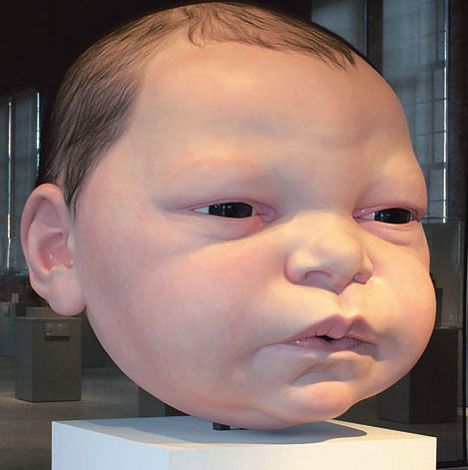- Home
- Editorial
- News
- Practice Guidelines
- Anesthesiology Guidelines
- Cancer Guidelines
- Cardiac Sciences Guidelines
- Critical Care Guidelines
- Dentistry Guidelines
- Dermatology Guidelines
- Diabetes and Endo Guidelines
- Diagnostics Guidelines
- ENT Guidelines
- Featured Practice Guidelines
- Gastroenterology Guidelines
- Geriatrics Guidelines
- Medicine Guidelines
- Nephrology Guidelines
- Neurosciences Guidelines
- Obs and Gynae Guidelines
- Ophthalmology Guidelines
- Orthopaedics Guidelines
- Paediatrics Guidelines
- Psychiatry Guidelines
- Pulmonology Guidelines
- Radiology Guidelines
- Surgery Guidelines
- Urology Guidelines
Baby with giant head to be operated at AIIMS Bhubaneswar

"We don't know what to do, where to go? After making rounds of many other hospitals, we finally brought him here three days ago (Thursday)," the baby's mother told TOI.
"People are saying so many things. Some said he is a ghost, others said he is alien. Many made beelines to have a glimpse of him. It's a difficult situation for the family," said a close relative of the baby present at the hospital.
Doctors at AIIMS Bhubaneswar are planning to conduct the operation in the coming 2-3 days
Dr Dilip Parida, superintendent, AIIMS Bhubaneswar hospital, told the TOI, "It's a congenital (since birth) condition in which cerebrospinal fluid (CSF) accumulates in the skull instead of flowing from brain to the spinal cord. This fluid enlarged and deformed the head."
"The accumulated fluid will be released gradually since sudden discharge may harm the brain. A passage will be created to ensure that the CSF flow from brain to spinal cord is established," said a doctor who is part of the team that would operate on the baby.
A series of surgeries will be performed on the baby by a team led by Dr Manoj Mohanty.
The History of Hydrocephalus Treatment
Modern hydrocephalus treatment started in 1949, when surgeons Frank Nulsen and Eugene Spitz showed that shunts, which led the cerebrospinal fluid to the blood veins, were effective in reducing the pressure in the ventricles.
In 1955 Charles Case (Casey) Holter was born with Arnold-Chiari malformation and a myelomeningocele. The after surgery, the inter-cranial pressure continued to raise despite ventricular taps temporarily relieving the pressure.
Shunt operation was attempted using ventriculoperitoneal shunts constructed with polythene tubing, but they failed.
While visiting his son in hospital, John Holter, Casey Holter's father, noticed how the valve in an inter-venous line allowed a needle to be inserted and withdrawn without any leakage of fluid. He suggested to Dr. Spitz that the usage of this type of one-way valve could prevent blockage of the shunt.
Using criteria specified by Spitz, Holter quickly began to design an model of a shunt valve using his experience as a hydraulics technician. Holter's design was simple and impressed the doctors, but further development was required. A material which could be easily sterilized, and wouldn't be rejected by the body was still needed.
Silicone had been successfully used in other surgical procedures and it was found to have the required characteristics. Therefore, after switching from polyethylene to silicone catheters there was a significant decrease in shunt failure.
Further development was made to create a valve which could reliably maintain pressure, and also to design valves with different pressure characteristics.
Holter continued manufacturing the shunts by hand and supplied over 500 per year.
The Spitz-Holter valve was patented, and a company was formed to manufacture the valves. The basic design from their valve can still used in today's hydrocephalus treatment.

Disclaimer: This site is primarily intended for healthcare professionals. Any content/information on this website does not replace the advice of medical and/or health professionals and should not be construed as medical/diagnostic advice/endorsement or prescription. Use of this site is subject to our terms of use, privacy policy, advertisement policy. © 2020 Minerva Medical Treatment Pvt Ltd